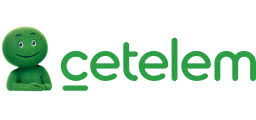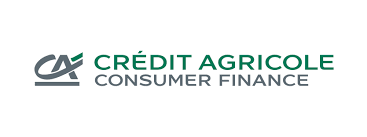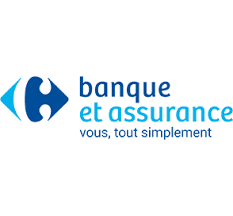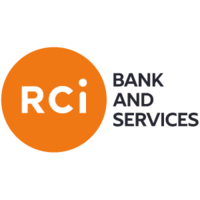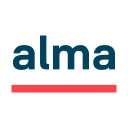Synthèse
The French consumer credit market, as part of the broader European market, has experienced a degree of recovery since 2020 despite a downturn in 2023 due to rising interest rates. The market saw consumer credit production rise by 1.5% in 2021 and 3.2% in 2022, while in France, total consumer loans reached €204 billion by September 2023, signaling a stabilization after consistent growth since 2015. Notably, the automotive sector, a significant consumer credit client, struggled with a 12% decrease in car registrations by 2022, thereby influencing the market. Additionally, household purchasing power has been challenged by inflation, affecting demand. The market is adapting to digital trends through the transformation of existing players and the emergence of FinTechs like Younited Credit. The sector also faces regulatory frameworks, such as the Lagarde Act and Neiertz Act, aimed at protecting consumers. Finally, the COVID-19 pandemic contributed to a dip in economic activity and purchasing power, further impacting market dynamics.
Trends in the Consumer Credit Market
The consumer credit market in the country under review has undergone significant fluctuations and is influenced by a myriad of factors, ranging from economic forces to legislation. Consumer credit itself is defined as a loan issued to individuals by financial institutions for personal, non-business usage, typically for the purchase of consumer goods. In recent times, this market has shown varying patterns of growth. At one point,, the market experienced a growth phase bolstered by declining interest rates. However, the trend has not been consistently upward. As of September 2023, outstanding consumer credit was recorded to be around 200 billion euros, indicative of a market that has somewhat stabilized, although the growth in credit production is not as robust as in previous years. Interest rates have risen, consequently leading to tightened market conditions. The sector is not just impacted by interest rate fluctuations but also by the performance of related sectors such as the automotive industry. A significant decline, in the range of 10-15%, in the registration of new cars in France by 2022, for example, has had a ripple effect on the consumer credit sector. The market is also characterized by digital transformation, which brings both challenges and opportunities. Established financial players are adapting to the digital era and new, tech-forward companies, commonly known as FinTechs, are gaining ground. Younited Credit's success is a testament to how digitalization is reshaping the sector. Across Europe, consumer credit production has varied, showing a modest increase between 1-4% in the years 2021 and 2022 despite a decline in 2020. Meanwhile, at the broader EU level, the overall outstanding consumer credit experienced an increase of around 5-7%, with the total amounting to over 1.2 trillion euros. This rise aligns with post-crisis economic growth in the region. In France, rising interest rates have posed challenges, and a decline of over 25% in personal loan production has been observed. This decline corresponds with an overall decrease in household engagement with consumer credit, as the proportion of households holding consumer credit in France diminished from 30% to just under 22% in 2022. Regulatory measures such as the Lagarde Act of 2010 and the Châtel law of 2005 have shaped the market by protecting consumer rights, such as the freedom to choose insurance providers, accelerating overindebtedness procedures, and introducing repayment options.
All players of the Consumer Credit Market
With a market rich in diversity and competition, the French consumer credit sector is heavily influenced by a variety of formidable entities that range from established network banks and specialized subsidiaries to innovative online institutions and retail-affiliated services. These influential players each bring unique strengths and strategies to the table, shaping the offerings available to consumers and the overall trajectory of the market.
Network Banks Leading the Charge
Undoubtedly, network banks such as **Crédit Agricole, LCL, Crédit Mutuel, BNP Paribas, La Banque Postale**, and **HSBC** stand as titans within the market. The fortitude of these well-established entities allows them to offer a wide array of consumer credit products, from personal loans to more specified financing solutions. They boast broad reach, solid reputations, and deep-rooted customer relationships that often span multiple generations. **Société Générale**, another major player, not only provides a traditional banking presence but also extends its hand in consumer credit through its vast network, offering personalized loan products to cater to an array of consumer needs.
Specialized Subsidiaries with Focused Expertise
Several banking groups have spun off specialized subsidiaries, fostering institutions that tailor their services to consumer credit. Among these are Cofidis known for its remote lending services, BNP Paribas Personal Finance which includes the well-known Cetelem brand that offers credit tailored for various consumer purchases, and Crédit Agricole Consumer Finance, the entity behind Sofinco, a significant nationally recognized credit brand. These specialized subsidiaries channel their market insights into creating adaptable and accessible credit solutions to a diverse clientele.
The Digital Pioneers: Online Banks and FinTechs
Not to be outdone by traditional banks, online entities such as Boursorama Banque, Axa Bank, BtoBnak, HelloBank!, My Money Bank, Younited Credit, Orange Bank, and Fidor Bank have carved out substantial niches in the consumer credit landscape. Younited Credit, in particular, has emerged as a significant figure in digital lending, streamlining the borrowing process through its technological platforms, and challenging the status quo with innovative, user-friendly services that cater to the modern digital consumer.
Retail's Financial Arms: Extending Beyond Shopping Carts
Most of the large Retail companies have established their own consumer credit specialized subsidiaries
à la compréhension de ce marché
Détail du contenu
 Informations
Informations
- Nombre de pages : 30 pages
- Format : Version digitale et PDF
- Dernière mise à jour : 11/11/2023
 Sommaire et extraits
Sommaire et extraits
1 Market overview
1.1 Definition and scope of the study
A consumer credit is a loan granted by a financial institution, directly or through a merchant, to a private individual acting for non-business purposes. Worth between €200 and €75,000, it is used to finance the purchase of consumer goods (furniture, computers, cars, etc.) with the exception of real estate.
There are several forms of consumer credit. They operate on two principles:
- the credit can be allocated to the purchase of an item determined at the time the contract is taken out (car, household appliances, travel, etc.). In this case, the credit obtained must be used solely to pay for the good in question;
- the credit may be unrestricted. In this case, you can use the sum borrowed as you wish, whether to purchase a consumer good or any other service. Personal loans and revolving credit fall into this category.
The French consumer credit market is growing
After significant growth since 2015, boosted by falling interest rates, the sector is going through a difficult period in 2023 due to rising interest rates. Outstanding consumer credit stabilized at 204 billion euros in September 2023, but growth rates in consumer credit production have fallen considerably. The problems faced by the automotive sector, one of the main customers of consumer credit, are exacerbated by a 12% drop in the number of cars registered in France by 2022, contributing to the challenges facing the sector. Falling household purchasing power due to inflation is having a negative impact on demand in an already struggling market.
The market is characterized by accelerating digitalization, manifested not only by the digital transformation of existing players, but also by the emergence of a growing number of FinTechs. The success of Younited Credit is indicative of this transformation of the sector.
1.2 Growth in the European market
Consumer credit markets are not uniform across Europe. The use and forms of loans are determined and evolve by socio-economic factors that can differ from country to country. For example, Germany is known for its debt-averse consumers, while in the UK or Turkey, it is more acceptable to hold large revolving ...
1.3 The French market: in difficulty as interest rates rise
In September ****, total consumer loans amounted to *** billion euros . This sum has risen steadily since ****, although growth has slowed in recent years. Outstanding consumer credit refers to the total amount of credit issued by financial institutions on a given date and not repaid. It is therefore a stock. Outstanding consumer loans France, ...
1.4 The Covid-19 effect
Decline in purchasing power
In the second quarter of ****, real gross domestic product (***).
As a result, consumer credit production plummeted in ****, peaking in May with a **% drop in consumer credit production by specialist institutions. However, a recovery seems to have begun in August, with a *.*% rise in loan production by specialist ...
2 Demand analysis
2.1 Borrower profile
According to a **** survey, it appears that **% of borrowers are consumers with a comfortable standard of living, who wish to indulge themselves and are adept at "coup de coeur" purchases. Rational consumers represent **% of those surveyed, and are those who wish to benefit from financial assistance for large, well-considered purchases. In ...
2.2 Microeconomic determinants of demand
The graph shows the evolution of the reasons for using consumer loans for different categories of goods between **** and ****. Here are some observations: *. Household equipment (***): - A downward trend has been observed since ****, indicating a gradual decline in the use of the loan for the purchase of home equipment goods. The ...
2.3 Macroeconomic determinants of demand
Purchasing power, consumption and savings rates Changes in household purchasing power have a major influence on household consumption, and therefore on their willingness to take out consumer credit. Since the **** crisis, purchasing power has evolved slowly, and growth has slowed. In particular, the sharp rise in the proportion of pre-committed expenditure ...
3 Market structure
3.1 The value chain
There are several stages in the consumer credit production process:
Design and marketing involve identifying targets, defining offers and developing sales networks. Granting and risk policy involves establishing selection criteria, assessing risk and segmenting the profiles of potential borrowers. The underwriting and acceptance stage involves creating the file, validating it and ...
3.2 The main players
The players in the consumer credit market are therefore highly diversified. The main players include
Network banks: Crédit Agricole, LCL, Crédit Mutuel, BNP Paribas, La Banque Postale, HSBC, Société Générale Online banks: Boursorama Banque, Axa Bank, BtoBnak, HelloBank!, My Money Bank, Younited Credit, Orange Bank, Fidor ...
3.3 Digitizing the market
According to a study by Roland Berger, one of the biggest challenges so far is digital transformation issues such as Big Data, digital contracts or new identification technologies. Over **% of those surveyed believe that digitalization will be the most important technological trend in the years to come.
The survey questioned senior ...
4 Offer analysis
4.1 Offer typology
There are many different types of consumer credit. The table below gives an overview of the main offers and their characteristics.
Source: ****
In addition, offers differ from one consumer credit issuer to another, for example :
Cetelem offers an APR starting at *.**%, for a loan of €**,*** over ** months Sofinco offers a fixed ...
4.2 Breakdown of credits by category
Amortizable loans are the most widespread form of consumer credit, accounting for almost **% of outstanding loans in ****. They enable borrowers to spread the repayment of capital and interest over a long period. They are followed by revolving credit (***).
Breakdown of outstanding consumer credit by type of credit France, ****, in Source: ****
Leasing, ...
4.3 Consumer credit interest rates
Aftera period of steadily falling interest rates between **** and January ****, there was a sharp rise in **** and ****, as shown in the graph below. Consumer credit interest rates have risen significantly over this period. Interest rates on revolving loans rose by *.* points between January **** and September ****, while those on amortizable loans increased ...
5 Regulations
5.1 Regulations
In France, a number of laws aim to achieve a better balance of power between professionals and consumers, and guarantee certain rights for consumers: the right to information, the right of withdrawal, the right to early repayment, the right to suspend repayments, etc. [***]
The Lagarde Act of July *, **** comprises several ...
6 Positioning the players
6.1 Segmentation
The table below provides a non-exhaustive overview of the main types of player.
- Younited Credit
- Société Générale
- Cetelem
- Crédit Agricole Consumer Finance
- Carrefour Banque
- RCI Bank (Groupe Renault)
- Alma
- Sofinco (Credit Agricole Consumer Finance)
- Cafom
- Aptimiz
- Holosis
- Damartex group
- Azuvia
- Sygma Banque (BNP Paribas)
- My Money Bank (GE Capital)
- CGI Finance
- Créatis (Cofidis)
- FLOA Bank (BNPParibas))
- Oney
- CFCAL (Crédit Foncier et Communal d'Alsace et de Lorraine)
- Franfinance (Groupe Société Générale)
- Pledg (Credit Agricole)
- Cofidis France
 Liste des graphiques
Liste des graphiques
- Croissance annuelle des crédits à la consommation aux ménages
- Encours des crédits à la consommation
- Croissance des crédits à la consommation aux ménages
- La part des ménages détenant des crédits à la consommation
- Répartition de l'encours de crédit à la consommation par type de crédit
Toutes nos études sont disponible en ligne et en PDF
Nous vous proposons de consulter un exemple de notre travail d'étude sur un autre marché !
Dernières actualités
Entreprises citées dans cette étude
Cette étude contient un panorama complet des entreprises du marché avec les derniers chiffres et actualités de chaque entreprise :
 Choisir cette étude c'est :
Choisir cette étude c'est :
Accéder à plus de 35 heures de travail
Nos études sont le résultat de plus de 35 heures de recherches et d'analyses. Utiliser nos études vous permet de consacrer plus de temps et de valeur ajoutée à vos projets.
Profiter de 6 années d'expérience et de plus de 1500 études sectorielles déjà produites
Notre expertise nous permet de produire des études complètes dans tous les secteurs, y compris des marchés de niche ou naissants.
Notre savoir-faire et notre méthodologie nous permet de produire des études avec un rapport qualité-prix unique
Accéder à plusieurs milliers d'articles et données payantes
Businesscoot a accès à l'ensemble de la presse économique payante ainsi qu'à des bases de données exclusives pour réaliser ses études de marché (+ 30 000 articles et sources privées).
Afin d'enrichir nos études, nos analystes utilisent également des indicateurs web (semrush, trends…) pour identifier les tendances sur un marché et les stratégies des entreprises. (Consulter nos sources payantes)
Un accompagnement garanti après votre achat
Une équipe dédiée au service après-vente, pour vous garantir un niveau de satisfaction élevé. (+33) 9 70 46 55 00
Un format digital pensé pour nos utilisateurs
Vous accédez à un PDF mais aussi à une version digitale pensée pour nos clients. Cette version vous permet d’accéder aux sources, aux données au format Excel et aux graphiques. Le contenu de l'étude peut ainsi être facilement récupéré et adapté pour vos supports.
 Nos offres :
Nos offres :
the consumer credit market | France
- Quels sont les chiffres sur la taille et la croissance du marché ?
- Quels leviers tirent la croissance du marché et leur évolution ?
- Quel est le positionnement des entreprises sur la chaine de valeur ?
- Comment se différencient les entreprises du marché ?
- Données issues de plusieurs dizaines de bases de données
Pack 5 études (-15%) France
- 5 études au prix de 75,6€HT par étude à choisir parmi nos 800 titres sur le catalogue France pendant 12 mois
- Conservez -15% sur les études supplémentaires achetées
- Choisissez le remboursement des crédits non consommés au terme des 12 mois (durée du pack)
Consultez les conditions du pack et de remboursement des crédits non consommés.
- 31/03/2024 - Ajout des informations de l'entreprise Cofidis France
- 16/02/2024 - Ajout des informations de l'entreprise Pledg (Credit Agricole)
- 04/07/2023 - Ajout des informations de l'entreprise Franfinance (Groupe Société Générale)
- 04/07/2023 - Ajout des informations de l'entreprise CFCAL (Crédit Foncier et Communal d'Alsace et de Lorraine)
- 04/07/2023 - Ajout des informations de l'entreprise Oney
- 04/07/2023 - Ajout des informations de l'entreprise FLOA Bank (anciennement Banque Casino)
- 04/07/2023 - Ajout des informations de l'entreprise Banque Postale Financement
- 04/07/2023 - Ajout des informations de l'entreprise Créatis
- 04/07/2023 - Ajout des informations de l'entreprise CGI Finance
- 04/07/2023 - Ajout des informations de l'entreprise GE Money Bank (GE Capital)
- 04/07/2023 - Ajout des informations de l'entreprise Sygma Banque
- 17/05/2023 - Ajout des informations de l'entreprise Azuvia
- 17/05/2023 - Ajout des informations de l'entreprise Damartex group
- 17/05/2023 - Ajout des informations de l'entreprise Holosis
- 17/05/2023 - Ajout des informations de l'entreprise Aptimiz
- 17/05/2023 - Ajout des informations de l'entreprise Cafom
- 17/05/2023 - Ajout des informations de l'entreprise Sofinco (Credit Agricole Consumer Finance)





 Crédit Agricole s'apprête à acquérir Pledg dans le secteur du paiement fractionné. - 15/02/2024
Crédit Agricole s'apprête à acquérir Pledg dans le secteur du paiement fractionné. - 15/02/2024
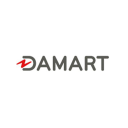 Mode : Damartex en passe de céder Afibel à CTFI - 27/12/2023
Mode : Damartex en passe de céder Afibel à CTFI - 27/12/2023


